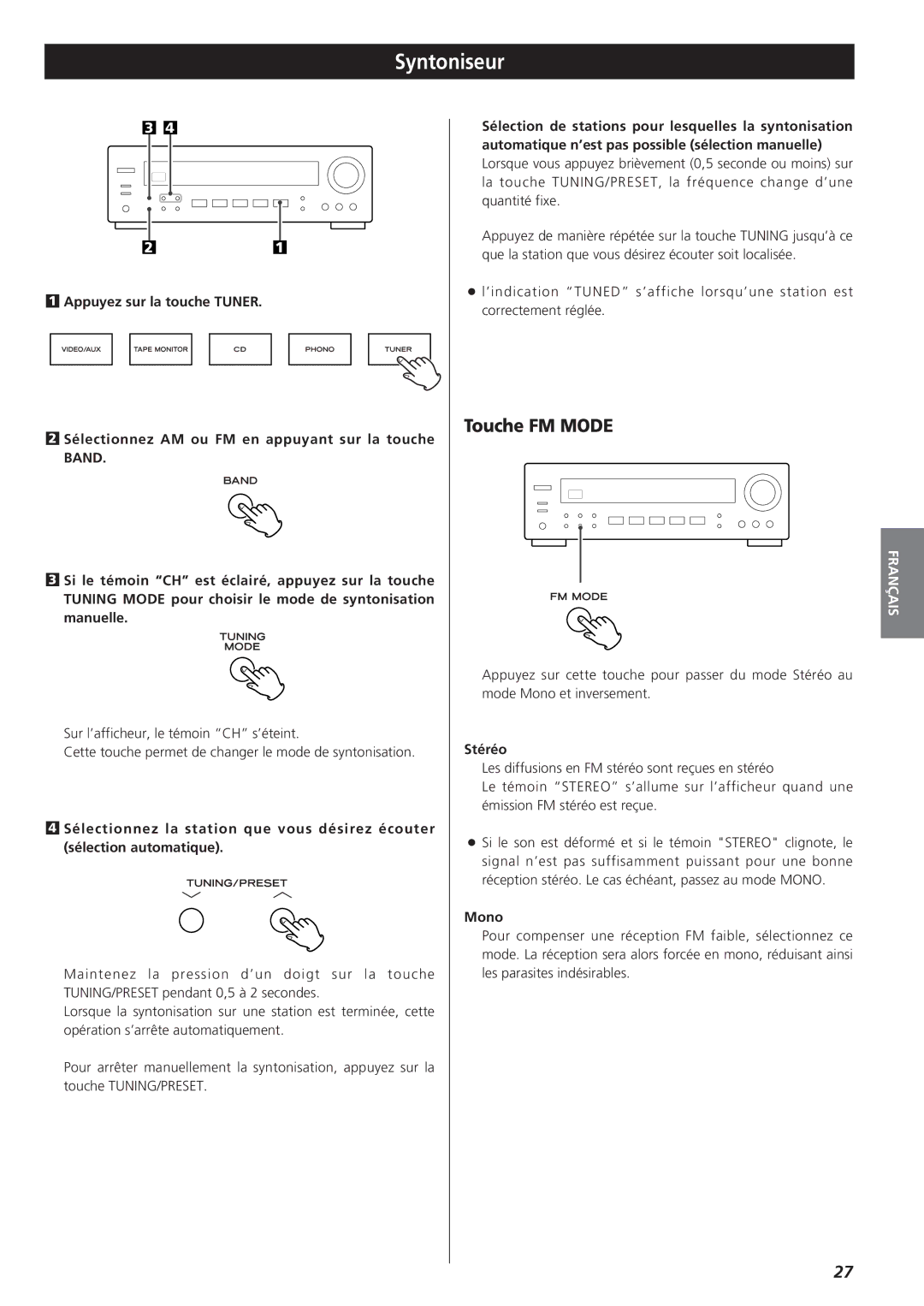AG-790 specifications
The Teac AG-790 is a versatile and high-performance audio receiver that combines state-of-the-art technology with classic design. Known for its dedication to delivering exceptional sound quality, the AG-790 is ideal for both audiophiles and casual listeners alike.One of the standout features of the AG-790 is its amplification power. It boasts a robust output of 100 watts per channel, allowing it to drive large speakers and fill a room with rich, immersive audio. This power is paired with a high-quality digital-to-analog converter (DAC), which enhances the clarity and fidelity of the music being played. This ensures that every note and nuance of your favorite tracks is reproduced with remarkable precision.
In terms of connectivity, the Teac AG-790 offers a wide array of options. It includes multiple analog inputs, allowing you to connect various devices like turntables and CD players. Additionally, it features digital inputs, such as optical and coaxial connections, for use with modern digital sources. The inclusion of Bluetooth functionality allows for seamless streaming from smartphones and tablets, providing convenience and flexibility in how you enjoy your music.
Another key characteristic of the AG-790 is its built-in phono stage. This feature is particularly appealing to vinyl enthusiasts, as it allows you to connect a turntable directly without the need for an external preamp. The phono stage ensures that your vinyl records are played back with all the warmth and depth that analog recordings are known for.
The AG-790 also pays attention to user experience, featuring an intuitive front panel with a clear display and easily accessible controls. The remote control enhances this usability, allowing for easy adjustments from a distance. Furthermore, the receiver supports various audio formats, ensuring that it can accommodate a vast array of music types and sources.
In summary, the Teac AG-790 is a sophisticated audio receiver that combines powerful amplification, versatile connectivity, and user-friendly features. Its high-quality sound reproduction and thoughtful design make it a worthy addition to any audio setup, whether for home listening or entertaining guests. With the AG-790, Teac continues its tradition of delivering high-fidelity audio experiences that cater to modern music consumption habits.

